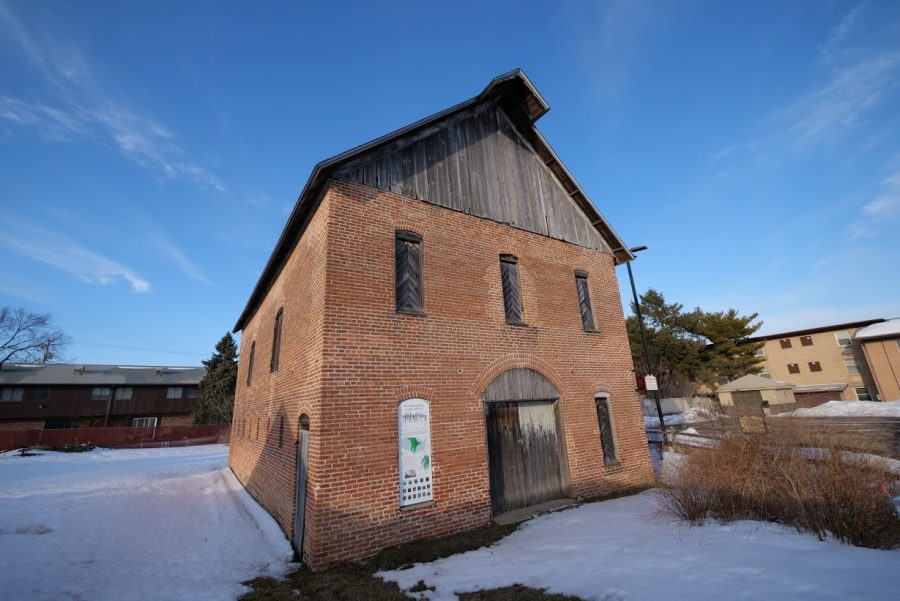How invention of barbed wire in DeKalb established NIU
The barn of the Glidden Homestead & Historical Center stands empty after renovations came to a halt due to the COVID-19 pandemic.
March 3, 2021
DeKALB – At face value, driving down Lincoln Highway seems pretty standard. Local restaurants like Pizza Villa, 824 W Lincoln Highway, and Molly’s Eatery & Drinkery, 1000 W Lincoln Highway, are at the center of DeKalb alongside bigger restaurant chains like Chipotle Mexican Grill and Burger King. In the middle of it all is the Glidden Historical Center, 921 W Lincoln Highway, and the Homestead Barn, a site with incredible historical significance: the site of early barbed wire development.
Barbed wire as an effective and patented device starts right at the Glidden Homestead with the inventor Joseph F. Glidden, said Robert Glover, the executive director of the Glidden Homestead Historical Center. Glidden first arrived in 1845, and lived in a wood cabin right where the Burger King, 913 W Lincoln Highway, is located. It wasn’t until 1861 when Glidden built the house, and the barn around 1870.
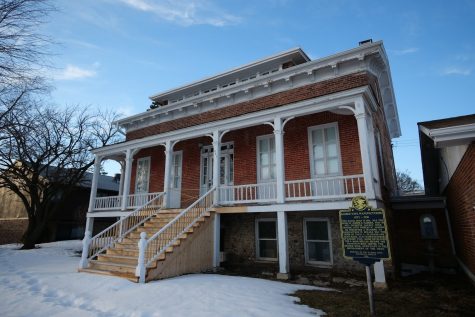
Aside from the invention of barbed wire, the barn itself has a unique architectural style that’s not typically seen when building barns, said Roger Keys, a general contractor who specializes in historic preservation.
“The use of brick, Victorian windows on the second level, which is normally where the barn loft is,” Keys said. “It’s a high style gentlemen’s type of horse barn and a quality built building.”
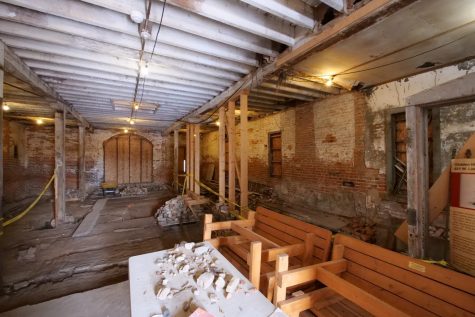
In 1860, Glidden was a part of a group who started running farm fairs for years specific to agriculture where the east lagoon is located on campus, Glover said. In September of 1873, Glidden, who’s a prominent farmer at this time, Isaac Ellwood, hardwares salesman and auctioneer and Jacob Haish, a builder and lumber merchant in town, came across a device at the fairground designed by farmer Henry Rose, which was a piece of wood with nails coming out of it that hung from a wire fence to deter cattle.
“Those three guys standing there, shoulder to shoulder and looking at this device that’s been patented, and Joseph Glidden says out loud, ‘The barb should be on the wire,’” Glover said. “And each of the three [begin] patenting a device.”
From the time at the fairground, Glidden starts experimenting, Glover said. This came with a wide range of ideas and techniques.
“My favorite thing about the barn and the invention was that Joseph used items which he found on his farm to make his first wire,” said Sarah Glidden DeMink, Glidden family member and director at Glidden Homestead Historical Center. “He twisted barbs out of his wife’s hairpins, used his friend Phineas Vaughn’s anvil and grindstone to twist the wire and a cottonwood tree to fasten the other ends of the wire.”
Later in the process to further fine-tune Glidden’s product, on Oct. 24 1873, Glidden heads out to the barn for wire when he sees the wire is all tangled up, and that was his answer, Glover said. Glidden sets up a wire with a barb on it, takes another wire, attaches the wire to a grinding wheel, and ultimately this winds the two wires together to hold all of the barbs in place. Glidden heads to Chicago the next day to start the patent paperwork.
“Both here in DeKalb and on a national level, the transition from agricultural work to manufacturing work happens within those four walls,” Glover said.
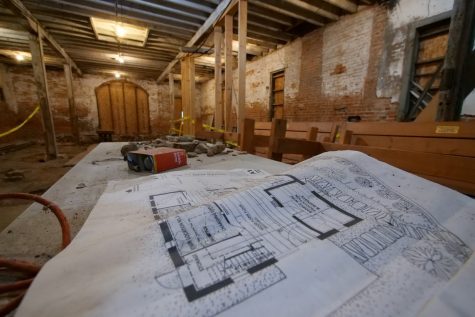
After the establishment of Glidden’s invention, barbed wire changed the landscape of farming from open range to establishing property lines, protecting crops and breeding cattle because they could control their herds, DeMink said.
The barn became a factory for barbed wire, and Glidden and his family moved into town in 1874, Glover said. Nearly 20 years later in 1895, Ellwood and Haish, who had accumulated wealth, helped place a normal school in northern Illinois. Ellwood and Haish reached out to Glidden about his land, and Glidden gave them 60 acres that became NIU. The founders of Founder’s Library are Glidden, Ellwood, Haish and Clinton Rosette.
The present goal is to restore the barn to be able to host exhibits, meetings, performances and events, according to the Glidden Homestead Historical Center website.
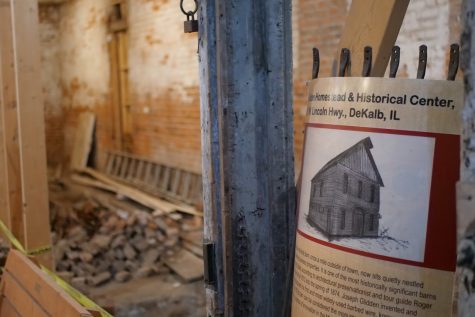
Both the house and barn are listed on the National Register of Historic Places with the National Park Service.
To volunteer, donate or learn more about the homestead and barn, information can be found on the Glidden Homestead Historical Center website.


